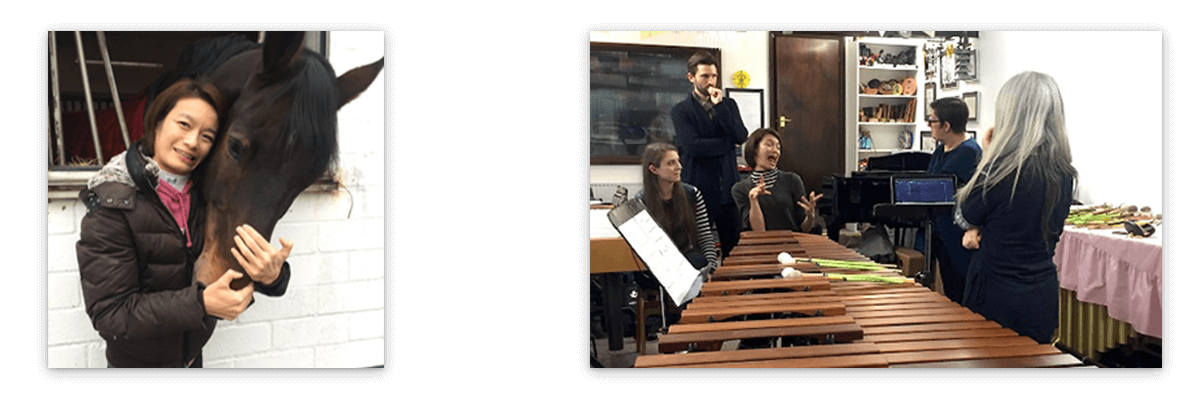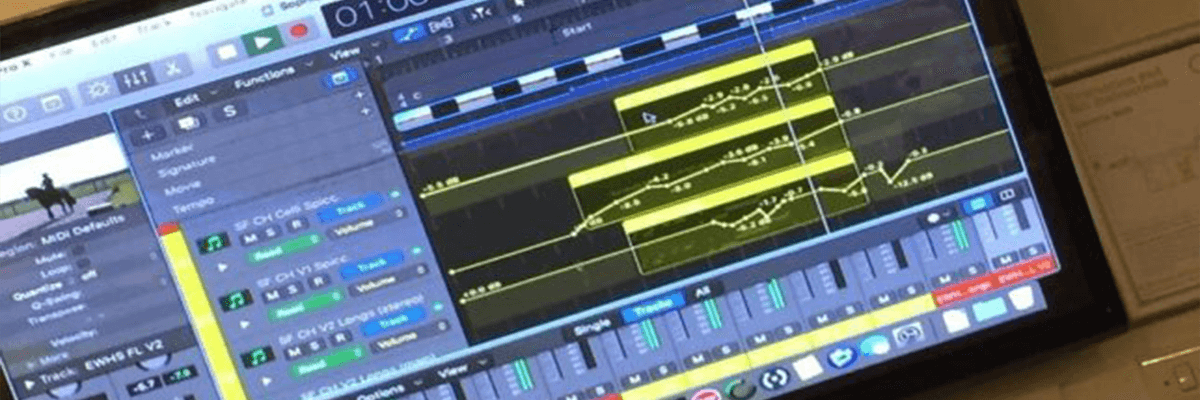Ken Carter praises & celebrates the following who are involved in this ongoing & challenging project- Ruth Montgomery, Melissa Mostyn, Dame Evelyn Glennie, Eloise Garland, Tom Hunt and of course LAURENTIA TAN

Decibels became involved as a partner with Audiovisability in promoting, managing and helping to sponsor the Dressage Project through the Sobell Foundation.
In April 2018, Ruth Montgomery who delivers lots of Music Workshops for Decibels and also runs Audiovisability, met Paralympian Rider Laurentia Tan who is ranked no.2 in the world for her grade in the world of Dressage. She is profoundly deaf and has cerebral palsy. She expressed to Ruth in BSL that she wishes she could “hear” the dressage music she is riding to with her horses, and previously her marks have been marked down due to starting and finishing early at her performances and everything else. Allowances for her deafness is not something the world of dressage sport can really do, as the main thing is performing to the music.
Please see the following article on paralympic.org.
After many weeks of discussing matters through emails and facetime with Laurentia, Ruth decided that it would be appropriate if Audiovisability partnered by Decibels & the Arts Council England could support her through “Creating Music through Technology” and prepare her for the Paralympic games in Tokyo in 2020. She was also very pleased to announce that Dame Evelyn Glennie had agreed to take part in this research & development project.
It was agreed to use technology that helps to “hear” the music without necessarily using hearing aids/cochlear implants. This would mean experimenting with using haptic technology which might involve haptic wrist bands, vibrating necklaces, subpack/woofer vests. It was agreed by Laurentia to try as a beginning the subpack/woofer vest, as she does not hear anything, and does not wear hearing aids very often, and with them on, she does not get the clarity of listening to music.
The vibrotactile or ‘woofer’ vest is worn on the torso that connects you wirelessly to the music via pulsing vibrations that can be augmented, or otherwise. We can guess what happened when Tan put it on and plugged into her rehearsal video.
The woofer vest cannot in any way monopolise the deaf person’s music access. The vibrations alone cannot convey other, subtler, musical elements. It was very important to give Laurentia a real music learning experience, as opposed to just putting the vest on and going for a ride.

The R&D highlights the need for greater collaboration between rider and composer, equivalent to that already practised by fellow competitors. Ruth & Eloise wanted to build team spirit: for Tom Hunt (Composer)to get to know Evelyn, and for us and Evelyn to identify Laurentia’s tastes and personality – which she believed would bring out the best of her in future games.
Evelyn, of course, is the deaf percussionist whose role easily supersedes the woofer vest. After all, the Dame and Tan share common ground, in terms of exploiting their sense of feeling with certain tools to exert greater flexibility and control.

For Glennie, it’s a wide range of beaters she can choose from. For Tan, among other things it’s her reins, which have eight finger loops; four on each side. (Some riders choose two, four or six, while others forego them altogether.)
Certain subtle movements act like a telephone wire, signaling the horse to shift. Similarly, Glennie takes her cue from the beaters’ reverberations in her fingers, swapping where necessary. In their first lesson together, that stimulated discussions around mood, emotions, tone ‘colours’, tweaks to the score.
Identifying the piano as the “beef” of the computerised score, Hunt re-wrote it for Marimba, the deep-toned xylophone Glennie works with. In the subsequent recording Tan lay below the giant instrument, watching for maximum sensory impact – a new love for music emerging.
“I so wish I could have an orchestra visible to me in the riding arena,” Tan muses, “so I can understand what I’m feeling in the vest.” Winning gold, with her teacher playing, is a dream she wants to pursue.
“It really needs exploring,” Ruth asserts. “Everyone else Laurentia is competing with has the advantage of being hearing and able to follow the music effortlessly. By learning inside out, it will enable her to choreograph her own floor plan more independently.”
Over a weekend in Cologne, both Marimba recording and woofer vest went on trial. Melissa Mostyn was among the witnesses in the arena being floored by Tan’s newfound ease. In a two-part mock test – one with the vest, one without – Germany’s National Dressage Judge, Michael Zimmerman, scored Tan 6% higher in the first part, unaware that she was wearing it. That this was the same routine that had upset her in Tryon was incredible.
This was the breakthrough the R&D needed: the setting of a new access precedent for deaf and disabled sports competitors. The impetus to take up its investment prospects with international and Singaporean sports authorities was clear.
Melissa, as a deaf person and someone who loves riding, can relate to Laurentia Tan but the very notion of performing in a public arena, with audience and judges scrutinising her every move, petrifies her.
This is not the end of the story about Laurentia Tan and her “Creating music through technology” involving the vibrotactile or ‘woofer’ vest. Watch this space for more updates
Ken Carter who is Decibels Founder & Executive Director is very grateful indeed to the following who are involved in this ongoing & challenging project-
Ruth Montgomery, Melissa Mostyn, Dame Evelyn Glennie, Eloise Garland, Tom Hunt and of course LAURENTIA TAN